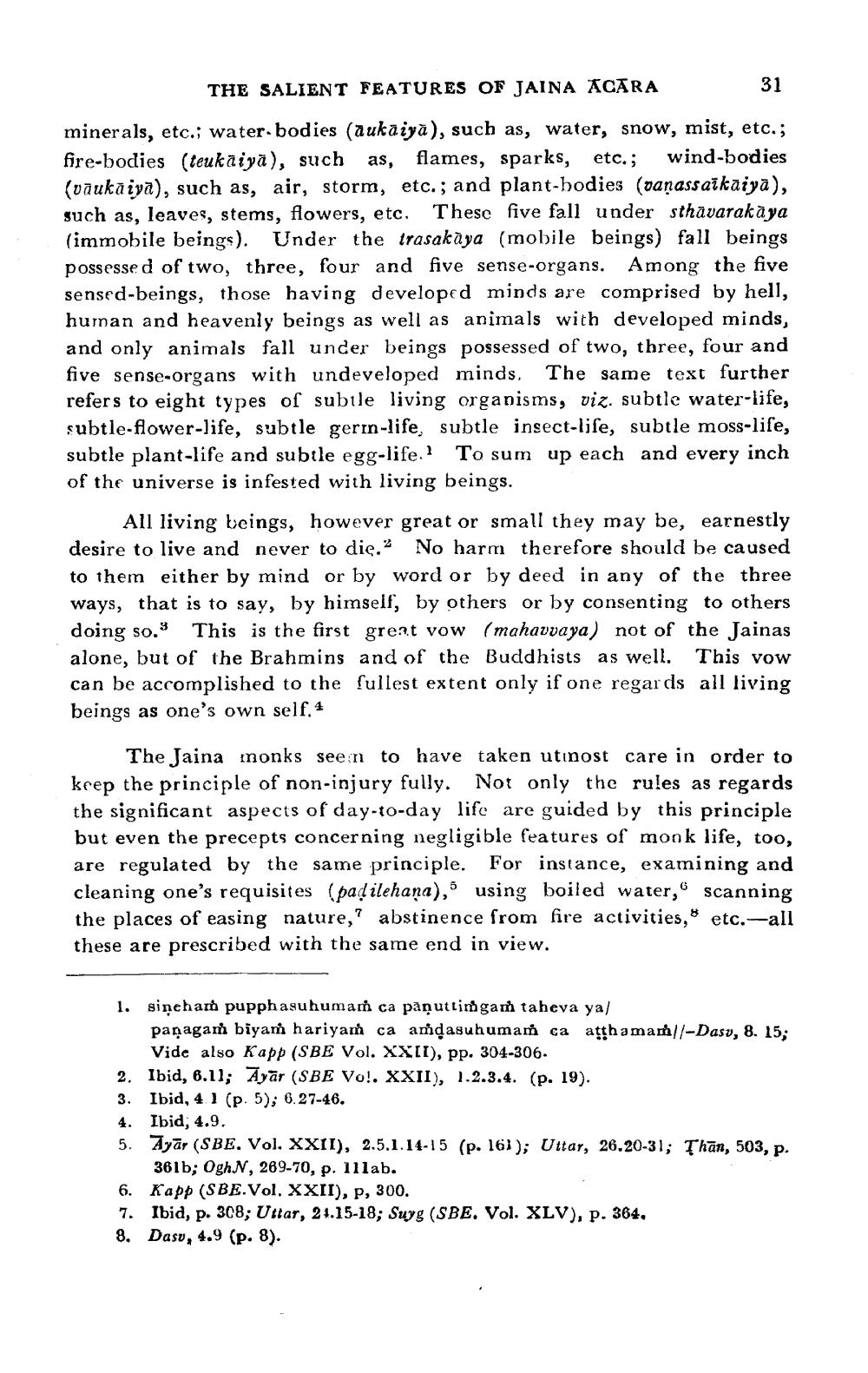________________
THE SALIENT FEATURES OF JAINA ACARA
31
minerals, etc.; water-bodies (aukaiya), such as, water, snow, mist, etc.; fire-bodies (teukaiya), such as, flames, sparks, etc.; wind-bodies (vaukaiya), such as, air, storm, etc.; and plant-bodies (vaṇassaīkāiyā), such as, leaves, stems, flowers, etc. These five fall under sthavarakaya (immobile beings). Under the trasakaya (mobile beings) fall beings possessed of two, three, four and five sense-organs. Among the five sensed-beings, those having developed minds are comprised by hell, human and heavenly beings as well as animals with developed minds, and only animals fall under beings possessed of two, three, four and five sense-organs with undeveloped minds. The same text further refers to eight types of subtle living organisms, viz. subtle water-life, subtle-flower-life, subtle germ-life, subtle insect-life, subtle moss-life, subtle plant-life and subtle egg-life. To sum up each and every inch of the universe is infested with living beings.
All living beings, however great or small they may be, earnestly desire to live and never to die." No harm therefore should be caused to them either by mind or by word or by deed in any of the three ways, that is to say, by himself, by others or by consenting to others doing so." This is the first great vow (mahavvaya) not of the Jainas alone, but of the Brahmins and of the Buddhists as well. This vow can be accomplished to the fullest extent only if one regards all living beings as one's own self.
The Jaina monks seem to have taken utmost care in order to keep the principle of non-injury fully. Not only the rules as regards the significant aspects of day-to-day life are guided by this principle but even the precepts concerning negligible features of monk life, too, are regulated by the same principle. For instance, examining and cleaning one's requisites (paḍilehana), using boiled water, scanning the places of easing nature, abstinence from fire activities, etc.-all these are prescribed with the same end in view.
6
8
1. sincham pupphasuhumam ca paṇuttimgam taheva ya/
panagam biyam hariyam ca amḍasuhumam ca atthamam//-Dasv, 8. 15; Vide also Kapp (SBE Vol. XXII), pp. 304-306.
2. Ibid, 6.11; Ayar (SBE Vo!. XXII), 1.2.3.4. (p. 19).
3. Ibid, 4.1 (p. 5); 6.27-46.
4. Ibid, 4.9.
5. Ayar (SBE. Vol. XXII), 2.5.1.14-15 (p. 161); Uttar, 26.20-31; Than, 503, p. 361b; OghN, 269-70, p. 11lab.
6. Kapp (SBE. Vol. XXII), P, 300.
7. Ibid, p. 308; Uttar, 24.15-18; Suyg (SBE. Vol. XLV), p. 364.
8. Dasv, 4.9 (p. 8).




